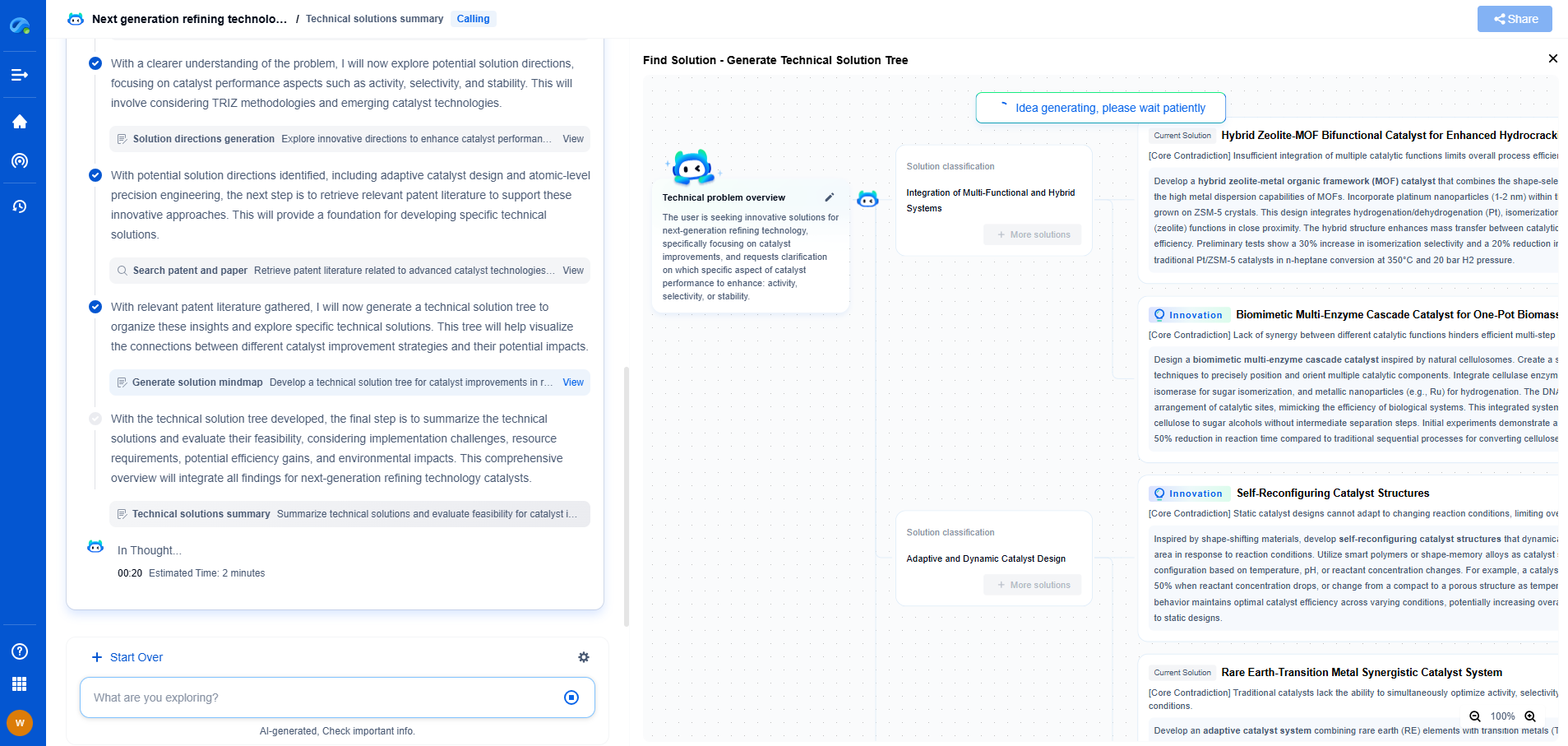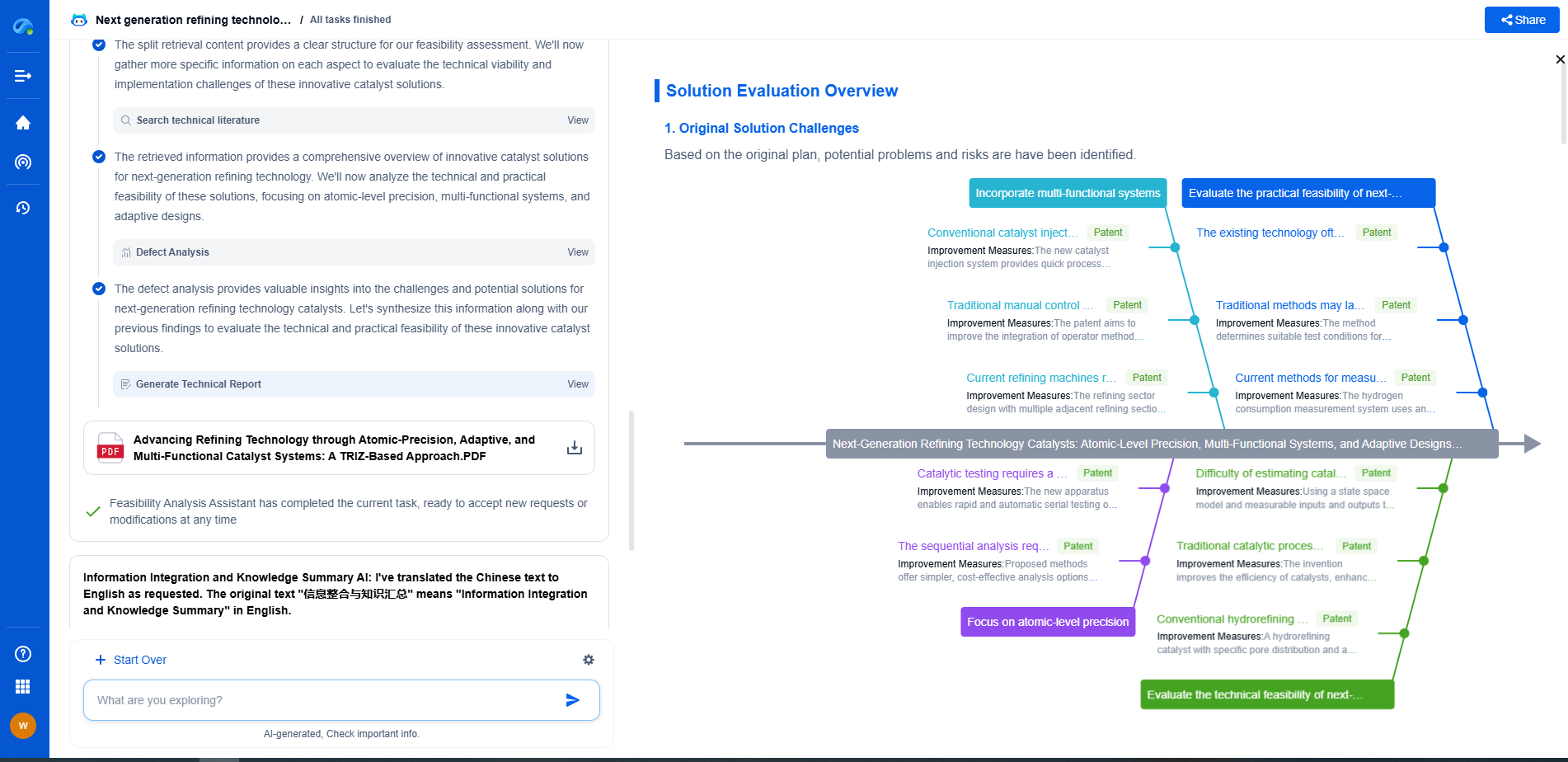Transactive Energy Systems: How Wind Farms Can Sell Flexibility to the Grid
JUN 26, 2025 |
Transactive energy systems represent a transformative approach to managing and optimizing the supply and demand of electricity. By leveraging advanced communication and information technologies, these systems enable decentralized energy resources, like wind farms, to actively participate in energy markets. The goal is to create a more resilient, efficient, and flexible power grid that can dynamically respond to fluctuating energy needs and integrate renewable energy sources seamlessly. In this context, selling flexibility to the grid becomes a vital function for wind farms, offering both economic and environmental benefits.
The Role of Flexibility in Modern Power Grids
In modern energy systems, flexibility refers to the capacity to adjust power generation or consumption in response to external signals, such as fluctuating demand or grid stability issues. As renewable energy sources like wind and solar power are inherently variable and unpredictable, they introduce new challenges for maintaining grid reliability. Flexibility becomes crucial in balancing supply and demand, mitigating the effects of intermittency, and ensuring a stable and continuous power supply. By selling flexibility, wind farms can provide ancillary services such as frequency regulation, load balancing, and peak shaving, contributing to a more adaptable and sustainable energy system.
How Wind Farms Generate and Manage Flexibility
Wind farms can generate flexibility primarily through two mechanisms: wind power forecasting and energy storage. Accurate wind power forecasting allows operators to predict power output and adjust operational strategies accordingly. By integrating advanced meteorological data and machine learning algorithms, wind farms can improve forecast accuracy, enhancing their ability to participate in energy markets.
Energy storage systems, such as batteries, complement wind power by storing excess energy during periods of high generation and releasing it when demand is high or generation is low. This capability enables wind farms to smooth out variability, provide consistent power output, and offer grid services like frequency regulation and reserve power.
Transactive Energy Markets: A Platform for Selling Flexibility
Transactive energy markets facilitate the exchange of flexibility between grid operators and decentralized energy resources, including wind farms. These markets rely on real-time data, automated bidding systems, and smart contracts to optimize energy transactions, ensuring that energy supply matches demand efficiently. Wind farms can participate in these markets by offering bids for flexibility services, setting prices based on current grid conditions and their own operational constraints.
Moreover, transactive energy markets empower consumers to become active participants in the energy landscape. Through demand response programs, consumers can adjust their energy usage in response to price signals, contributing to overall grid flexibility. This decentralized approach fosters innovation, enhances grid reliability, and supports the integration of renewable energy.
Economic and Environmental Benefits of Selling Flexibility
By selling flexibility to the grid, wind farms can unlock multiple economic and environmental benefits. Economically, participating in transactive energy markets provides wind farms with additional revenue streams, enhancing their financial viability and encouraging further investment in renewable energy. This revenue can be reinvested in advanced technologies, infrastructure improvements, and new projects, driving the transition towards a cleaner energy future.
Environmentally, increasing the flexibility of wind farms supports the integration of higher levels of renewable energy, reducing reliance on fossil fuels and lowering greenhouse gas emissions. As wind farms supply more flexible power, they help stabilize the grid and reduce the need for backup power from conventional, carbon-intensive sources.
Challenges and Future Perspectives
Despite the promising potential of transactive energy systems, several challenges need to be addressed to fully realize their benefits. Regulatory frameworks must evolve to accommodate decentralized energy transactions, and robust cybersecurity measures are essential to protect sensitive data and ensure the integrity of energy markets. Additionally, the development of standardized communication protocols and interoperable technologies is crucial for seamless integration across diverse energy systems.
Looking ahead, continuous advancements in digital technologies, data analytics, and storage solutions will further enhance the capabilities of transactive energy systems. Collaborative efforts between policymakers, grid operators, technology developers, and renewable energy producers will be key in overcoming existing barriers and unlocking the full potential of these innovative energy models.
Conclusion
Transactive energy systems represent a paradigm shift in how we manage and optimize our energy resources. By enabling wind farms to sell flexibility to the grid, these systems enhance grid reliability, support renewable energy integration, and contribute to a sustainable energy future. As we continue to embrace digitalization and decentralization in the energy sector, transactive energy systems will play an increasingly vital role in shaping a resilient and efficient power grid for generations to come.
Empower Your Wind Power Innovation with AI
In the fast-evolving landscape of wind turbine technology—where aerodynamic optimization, generator efficiency, and structural innovation are critical—staying ahead requires more than just expertise. It requires intelligent tools that accelerate R&D and protect your competitive edge.
Patsnap Eureka is your AI-powered research assistant, designed specifically for innovators like you working at the forefront of Wind Motors. Whether you're analyzing blade design trends, exploring novel gearbox architectures, or navigating complex global patent landscapes, Eureka streamlines the entire process with precision and speed.
👉 Experience how Patsnap Eureka can revolutionize your R&D and IP strategy. Request a demo today and power up your next breakthrough.
- R&D
- Intellectual Property
- Life Sciences
- Materials
- Tech Scout
- Unparalleled Data Quality
- Higher Quality Content
- 60% Fewer Hallucinations
Browse by: Latest US Patents, China's latest patents, Technical Efficacy Thesaurus, Application Domain, Technology Topic, Popular Technical Reports.
© 2025 PatSnap. All rights reserved.Legal|Privacy policy|Modern Slavery Act Transparency Statement|Sitemap|About US| Contact US: help@patsnap.com

